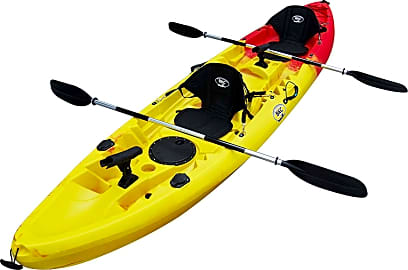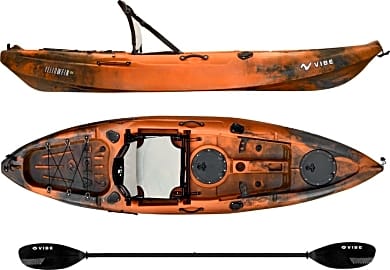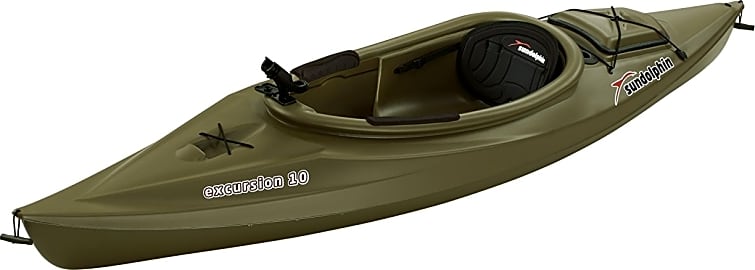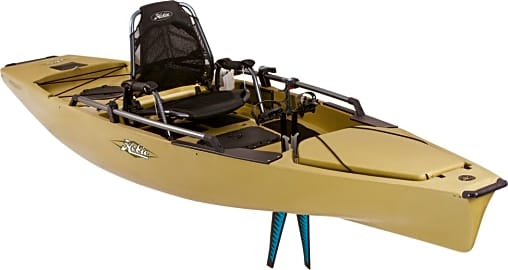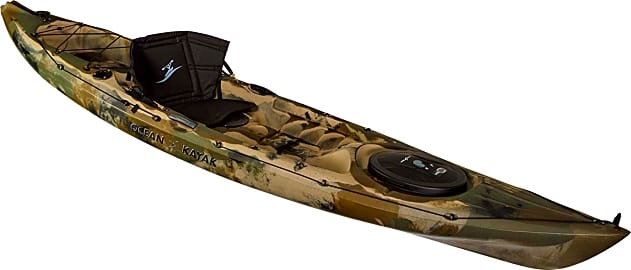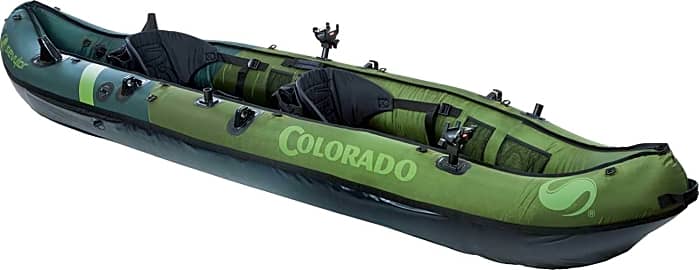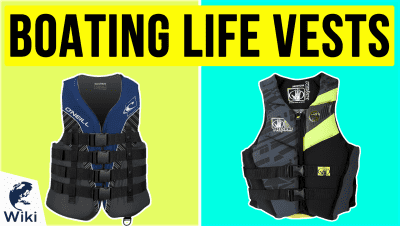The 10 Best Kayaks

This wiki has been updated 39 times since it was first published in September of 2015. Looking for a relatively inexpensive way to get out on the water in search of your next big catch? Then try one of these fishing kayaks, which, depending on the model, come with an array of handy features, such as storage space for gear, rod holders, and padded backrests. Our list includes both sit-in and sit-on versions, as well as designs made specifically for fresh and salt water. When users buy our independently chosen editorial selections, we may earn commissions to help fund the Wiki.
Editor's Notes
March 08, 2021:
At this time we have determined that no changes should be made to our current recommendations. We have noticed that some of the models here are suffering from availability issues, but this appears to be due to supply chain issues, rather than the kayaks being discontinued by the manufacturer. In fact, we researched every model that was unavailable at the time we updated this to ensure this was the case. And, since these still stand out as being some of the top fishing kayaks available for many of the reasons we mention in the list, we believe it is best not to replace them with lesser quality options simply due to stock issues.
April 14, 2019:
Removed the Vibe Kayaks Sea Ghost 130 and Sun Dolphin Journey, replacing them with the BKC UH-TK219 and Vibe Kayaks Yellowfin 100. There wasn't really a problem with the Sea Ghost 130, we just replaced it with an upgraded version from the same manufacturer. The Sun Dolphin Journey, on the other hand, was penalized due to an alarming tendency to take on water.
If we're just examining features and performance, the Hobie Mirage Pro 14 would rank higher on the list, but given that it's several times more expensive than its competition, it will be hard for many people to justify the expense. Still, it's worth every penny — assuming you have that many pennies lying around.
The Vibe Kayaks Skipjack 90 retained the top spot again for this edition, as it's well-made, versatile, and has all the bells and whistles the average angler is likely to need. While others may outperform it in one area or another, we think you'll be hard-pressed to find a better all-around option.
Special Honors
Old Town Sportsman Bigwater PDL 132 The Old Town Sportsman Bigwater PDL 132 will have you fishing in comfort thanks to a supportive, high-back seat. Plus, you propel it using foot pedals, so your hands will be free to hold your rods as you wrangle your catch on board. oldtowncanoe.johnsonoutdoors.com
What Separates a Good Fishing Kayak From a Great One?
Whether you're launching from a brook or paddling through shallow water, chances are a kayak's hull is going to brush up against some rocks or debris.
The difference between a good fishing kayak and a great one begins with stability. Unlike an average kayak, which is prone to tip from time to time, you'll need a fishing kayak to remain stable, particularly when you're reeling in a big catch or stowing all your gear. Most top-of-the-line fishing kayaks weigh somewhere between 50-90 pounds, and their product descriptions include phrases like sturdy and reliable. These kayaks are also built with a reinforced bulkhead.
The next area you'll want to focus on is the kayak's storage capacity. At the very least, you'll need a fishing kayak to store life jackets, tackle boxes, fishing rods, and whatever you catch. Beyond that you might want to have some space for storing your own food, some camping gear, and perhaps even a change of clothes. In addition, check to see if a fishing kayak has been built to accommodate more than one passenger. Obviously, it makes for a more entertaining trip if you can bring along someone else for the ride.
Now that you're past the basics, you'll want to consider each kayak's durability. Whether you're launching from a brook or paddling through shallow water, chances are a kayak's hull is going to brush up against some rocks or debris. The most reliable kayaks are usually made of polyethylene, which is a high-density plastic material. Top kayaks also feature several looping holes drilled into the body so that you can tie off a kayak if you happen to be docked.
In terms of comfort, a great kayak should offer significant leg room, and body room, along with padding around the kayak's seating areas, regardless of whether the kayak is designed for sitting inside or along the top (see below).
How Do I Choose the Right Fishing Kayak for ME?
Most fishing kayaks fall into two basic categories. There are sit-in kayaks (SIKs), and sit-out kayaks (SOKs). Sit-in kayaks are generally designed for any experienced kayaker who occasionally enjoys a bit of fishing. Sit-out kayaks are generally designed for any hardcore fisherman who prefers versatility, an aerial view, and ready access to several rods, each of which has been cast along the starboard and port.
Will you need to pass through any low clearances on your way to the water?
If you enjoy kayaking and you simply want a vessel that can accommodate fishing rods every now and again, it's best to focus on whether the kayak has a sleek design and whether - based on its weight - the kayak will move swiftly in the water. This is especially important if you plan on using the kayak in ocean water that'll force you to paddle out past the breakers before the water gets deep.
Take into consideration how you plan on transporting the kayak. Do you have a luggage rack on top of your car that you can tie the kayak to? Do you own a flatbed truck that you can place a kayak in the back of? Will you need to pass through any low clearances on your way to the water? Is the kayak you're interested in light enough that you'll be able to remove it from the vehicle without help?
Finally, you may want to give some thought to aesthetics. If you plan on kayaking in a backwoods region, canvas brown, charcoal gray, or some form of camouflage might be the appropriate color. If you plan on kayaking in the ocean, green or blue might make the most sense. If you plan on kayaking at night, you'll want to veer toward high-visibility yellow, or red, or orange. The same goes for any waterway where you'll be competing with larger vessels - if you want to avoid collisions, you've gotta be smart.
A Brief History of The Fishing Kayak
Would you believe that kayaks were originally designed for fishing? It's true. Natives from the Arctic region developed kayaks more than 4000 years ago as a means of spearing fish in cold water. These early kayaks were hollowed out of wooden frames, which were, in turn, stitched water-tight by using animal hides. In many cases, hunters would use the hide of a seal to create the illusion of disguise.
Perhaps the biggest difference between the modern fishing kayak and its Arctic ancestors is the placement of seating.
Today's fishing kayak remains popular in that it allows for exercise, easy entry into narrow waterways, and zero docking costs. In addition, fishing kayaks are relatively low-maintenance, as opposed to a fishing boat, which necessitates ongoing repair, upkeep, and gas. What's more, people can afford to own two or more fishing kayaks, which allows for flexibility, depending on where - and why - someone is casting out.
Fishing kayaks have grown more sophisticated over the past 20 years, evolving to include everything from fish finders and GPS to running lights and trolling motors. A lot of these kayaks have also been crafted to remain buoyant, while featuring ample storage to fit several rods, tackle boxes, food, life jackets, landing nets, and more.
Perhaps the biggest difference between the modern fishing kayak and its Arctic ancestors is the placement of seating. Today's anglers prefer a kayak that allows them to sit above the vessel on a cushioned seat, whereas early Arctic hunters were almost religious about being seated inside the kayak, where they could blend in amidst preparing to harpoon a fish in fresh water.


